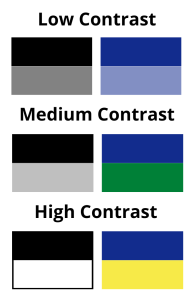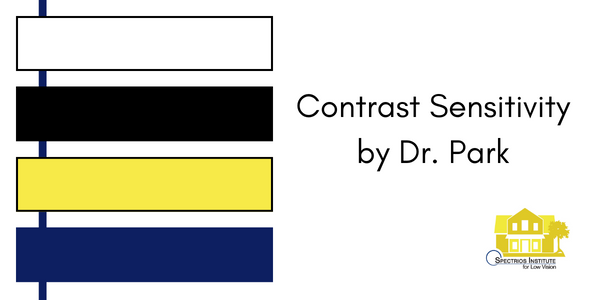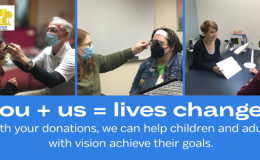 Do you have trouble seeing obstacles when you are walking? Or reading printed materials? Or seeing food on your plate? Let’s consider several scenarios:
Do you have trouble seeing obstacles when you are walking? Or reading printed materials? Or seeing food on your plate? Let’s consider several scenarios:
John has been treated for glaucoma for several years. Over the past several months, he has been walking much slower because he has trouble recognizing curbs and uneven pavements. It’s especially challenging to walk down the stairs. He is constantly afraid of falling.
Mary is diagnosed with macular degeneration. Though her condition is mild and she can see generally well, she’s having particular difficulty reading newspapers. In addition, any colored prints, such as frozen food instructions, are difficult to read.
Lisa is managed for multiple ocular diseases. She has trouble seeing certain foods on a plate. She no longer enjoys watching movies because any dark scenes are impossible to see.
Do you see yourself in any of these situations? What John, Mary and Lisa have in common is a decrease in contrast sensitivity.
Contrast sensitivity is the ability to detect an object against its background – telling the difference between light and dark. Unlike visual acuity test, which is a high contrast test, contrast sensitivity test determines how one can see under low contrast in real-world conditions. It is certainly possible for one to have good visual acuity but have contrast sensitivity impairment and face frustration with activities of daily living. A variety of eye conditions, such as macular degeneration, glaucoma, and cataract, could negatively affect contrast sensitivity.
At Spectrios, every patient is tested for visual acuity, visual field, and contrast sensitivity. Contrast sensitivity is then categorized as normal, mild, moderate, severe, or profound impairment. Individualized comprehensive low vision rehabilitation plan aims to improve one’s function in low contrast conditions.
One potential optical solution could be adding a tint to spectacle lenses or wearing a filter over clear spectacles. Yellow or amber color is often determined to be helpful improving contrast and reduce glare in dim or indoor lighting condition. Interestingly, many patients find the color light plum helpful as well. As colors and intensity (percentage transmission) that help vary from person to person, an in-office trial is strongly advised to determine specific recommendations.
If you need help determining the best tools to improve contrast sensitivity, make an appointment with one of our specially trained low vision optometrists.






